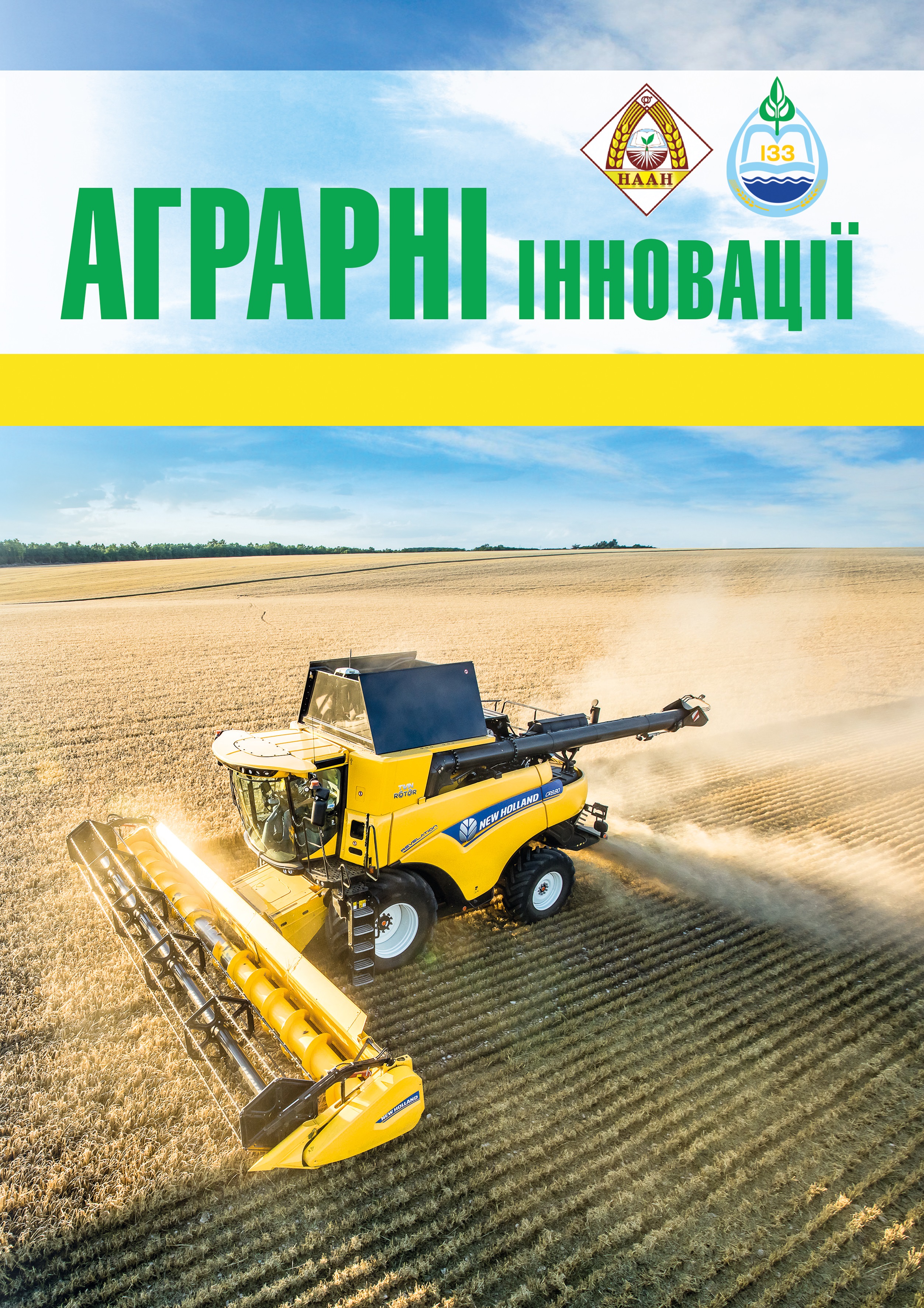FORECASTING THE YIELDS OF SPRING ROW CROPS BY THE REMOTE SENSING DATA
Abstract
Purpose: to develop statistical models to forecast the yields of major spring row crops, namely, corn, sorghum and soybean, depending on the data of remote sensing – normalized difference vegetation index (NDVI), recorded at the critical stages of the crops growth. Methods. We used analytical, statistical, GIS-technologies methods to conduct the study. Remote sensing data for the NDVI computation was obtained from the satellite Sentinel-2 imagery. Regression analysis of a polynomial type was applied to work out forecasting models on the basis of true yielding data, which were recorded during the harvesting of the studied crops in the period of 2017–2018 at the experimental field of the Institute of Irrigated Agriculture of NAAS. Results. Statistical processing of the data revealed that regression models are suitable for accurate forecasting of the crops’ yields. The best performance of the regression models was under the use of NDVI values, which were recorded at the stage of tasselling (VT) and silking (R1) for corn (the coefficient of determination is 0.9813), at the stage of second trifoliate (V2) for soybean (the coefficient of determination is 0.9829), and at the stage of half bloom (S6) for sorghum (the coefficient of determination is 0.8645). NDVI assumption in other studied stages of the crops growth led to a decrease in the accuracy of the forecasting models. Conclusions. NDVI is a convenient and flexible, easy-in-use tool for early yield prediction of major spring row crops. Further investigations in this field and enhancement of the performance of the developed models through the introduction of additional data and use of better computation techniques is needed to improve the quality of yield predictions.
References
2. Bolton, D.K., & Friedl, M.A. (2013). Forecasting crop yield using remotely sensed vegetation indices and crop phenology metrics. Agricultural and Forest Meteorology, 173, 74–84.
3. Carlson, T.N., & Ripley, D.A. (1997). On the relation between NDVI, fractional vegetation cover, and leaf area index. Remote sensing of Environment, 62, 241–252.
4. F. (2016). Mean absolute percentage error for regression models. Neurocomputing, 192, 38–48.
5. de Oliveira, M.F., Ormond, A.T.S., de FreitasDe Myttenaere, A., Golden, B., Le Grand, B., & Rossi, Noronha, R.H., dos Santos, A.F., Zerbato, C., & Furlani, C. E.A. (2019). Prediction Models of Corn Yield by NDVI in Function of the Spacing Arrangement. Journal of Agricultural Science, 11, 493–500.
6. Everitt, B.S., & Skrondal, A. (2010). The Cambridge Dictionary of Statistics. Cambridge Univ. Press, Cambridge, UK.
7. Fang, H., Liang, S., & Hoogenboom, G. (2011). Integration of MODIS LAI and vegetation index products with the CSM–CERES–Maize model for corn yield esti-mation. International Journal of Remote Sensing, 32, 1039–1065.
Fernandes, J.L., Ebecken, N.F.F., & Esquerdo,J.
8. C.D.M. (2017). Sugarcane yield prediction in Brazil using NDVI time series and neural networks ensem-ble. International Journal of Remote Sensing, 38(16), 4631–4644.
9. Fernandez-Ordoñez, Y.M., & Soria-Ruiz, J. (2017). Maize crop yield estimation with remote sensing and empir-ical models. In: 2017 IEEE International Geoscience and Remote Sensing Symposium (IGARSS). IEEE, pp. 3035–3038.
10. Gamon, J.A., Field, C.B., Goulden, M.L., Griffin, K.L., Hartley, A.E., Joel, G., Penuelas, J., & Valentini, R. (1995). Relationships between NDVI, canopy structure, and photo-synthesis in three Californian vegetation types. Ecological Applications, 5, 28–41.
11. Gong, Z., Aldeen, M., & Elsner, L. (2002). A note on a generalized Cramer's rule. Linear Algebra and its Applications, 340, 253–254.
12. Herold, M., Scepan, J., & Clarke, K.C. (2002). The use of remote sensing and landscape metrics to describe structures and changes in urban land uses. Environment and Planning A, 34, 1443–1458.






